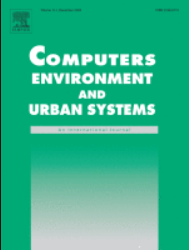
Satisfying transport needs with low carbon emissions: Exploring individual, social, and built environmental factors
The article studies the relationships between daily travel greenhouse gas (GHG) emissions and self-rated satisfaction with transport needs. It also investigates the conditions that satisfy one's transport needs at emission levels compatible with internationally agreed reduction targets by 2030 to keep warming below 1.5 degrees. It uses a representative geo-questionnaire survey from Poznan, a functional urban area in Poland (ca 800 thousand inhabitants), with 550 study participants answering questions used in the study. Four built environmental (BE) and accessibility measures are calculated using geospatial methods and used as predictors of low/high emission levels, low/high need satisfaction levels, and their combinations (i.e., social-ecological quadrants), along with socio-demographic characteristics and transport-related resources, competences, and responsibilities. The relationship between transport need satisfaction and GHG emissions is positive but weak and non-linear. In line with previous studies on well-being and energy or carbon footprints, the relationship appears to saturate (i.e., need satisfaction most steeply increasing at low emission levels). The saturation point is at the emission level lower than the 2030 1.5-degree compatible target (∼300 kg CO2/year/person). A sizeable group (∼30 %) satisfies their transport needs at low emission levels (i.e., sufficiency condition). Exploratory spatial data analysis reveals that members of this group cluster in Poznan city center. All BE characteristics significantly and strongly influence the outcome variables, with central, densely populated, and walkable locations increasing the odds of having one's needs met at low emission levels. Retirees comprise about half of the sufficiency group, but there are also many workers. Specific transport needs that negatively impact the ability to meet one's needs at low emission levels, including multiple locations and doing errands on the way from or to work. The results support land use policies that reduce travel distances (i.e., densification, preventing sprawl, promoting walkable street designs) as they support low-carbon access to necessary activities for all social groups. Suburban residential locations, in turn, are associated with low need satisfaction and high emissions. The results also highlight that the ability to meet one's transport needs within the emission threshold is spatially and individually differentiated, with implications for climate policies in the mobility domain.




